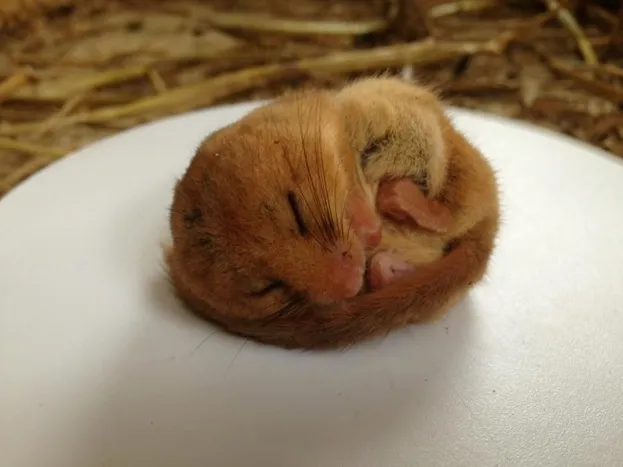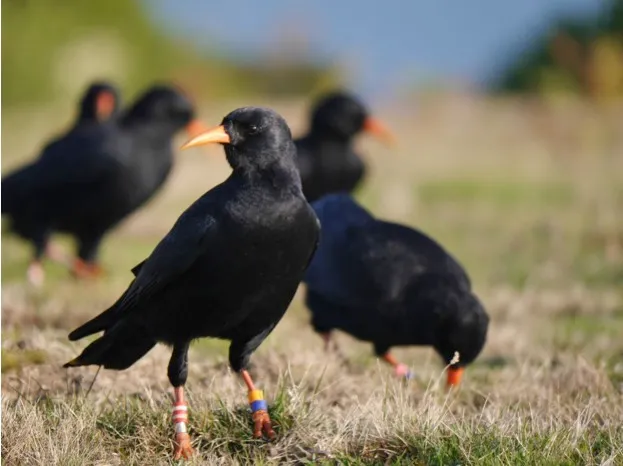Dormice have been bred in British zoos for release into the wild. © Nick Shelley/Berkshire College of Agriculture
British zoos do a lot of conservation work all around the world – from habitat protection and other work in Madagascar to slow down declines of the island’s famous lemurs to breeding Amur leopards for a reintroduction project in Russia’s frozen Far East.
But members of the British and Irish Association of Zoos and Aquariums – otherwise known as BIAZA – are also involved in projects protecting and even bringing back from extinction species native to our shores.
Much of this work goes unnoticed, so to celebrate the contribution British zoos make to the wildlife of our country, BIAZA has revealed its pick of the top 10 species benefiting from our zoos’ resources and expertise. Here we pick our favourite five.
Hazel dormouse

Captive-breeding of dormice has helped restore the species to some parts of the UK. © Nick Shelley/Berkshire College of Agriculture
Hard to get a glimpse of at the best of times, the hazel dormouse has disappeared from half the counties in Britain where it used to be found. Now only patchily found in Southern England and South Wales, and along the English-Welsh border, this tiny mammal has been helped by captive-breeding in zoos that include the Institute of Zoology (the scientific wing of London Zoo), the Wildwood Trust in Kent and Paignton Zoo in Devon. Reintroductions using captive-bred animals are slowly putting the species back into locations it has disappeared from and slowing down the rate of decline.
Eurasian beaver

Zoo involvement in the Scottish Beaver Trial has helped bring back this native species. © Steve Gardner/RZSS
The beaver is Europe’s – and Britain’s – largest native species of rodent, but it went extinct in the UK some 400 years ago. A pioneering reintroduction project at Knapdale on Scotland’s west coast was implemented by a partnership that included the Royal Zoological Society of Scotland (RZSS), which runs Edinburgh Zoo, as well as the Scottish Wildlife Trust and the Forestry Commission Scotland. No zoos were involved in the accidental escapes of beavers into the Tay Valley towards Scotland’s east coast, and into the River Otter in Devon, but nevertheless both populations of animals are said to be thriving.
Water vole

Water vole reintroductions have been helped by captive-breeding in zoos. © Juha Soininen/WWT
Unlike the beaver, the water vole hasn’t gone extinct in Britain, but it has been dubbed our “fastest declining mammal”, having disappeared from some 90 per cent of the places where it was originally found. Habitat loss and predation by American mink are both blamed. Reintroductions right across the country – the latest in Malham Tarn in North Yorkshire – have helped to restore the species to some of its former haunts, with many animals being captive-bred by the Wildwood Trust in Herne Bay (which does field work as well). Another BIAZA member, the Wildfowl and Wetland Trust (WWT), has reintroduced water voles to its Llanelli, Slimbridge and Martin Mere centres.
Common crane

Cranes reared from eggs at WWT Slimbridge have been released into the Somerset Levels. © Stefan Hunt/WWT
Cranes have quietly re-established themselves in recent decades as breeding birds in the Norfolk Broads and a few other locations in East Anglia, but they needed a big helping hand to return to another of Britain’s most extensive wetland areas – the Somerset Levels. Thanks to work by the Wildfowl and Wetlands Trust (WWT), the RSPB and the Pensthorpe Conservation Trust, nearly 100 birds have been released into the levels since 2010, and they started to breed last year. WWT Slimbridge reared cranes from eggs collected in Germany and then released them into the wild.
Red-billed chough

A number of zoos have helped restore choughs to Jersey. © Liz Corry/Durrell Wildlife Park
Anyone who has spent any time on the coasts of West Wales or Cornwall will be familiar with the high-pitched calls and distinctive orangey-red bills and legs of the chough. Despite intensive conservation work, they are still rare in Britain, but on the island of Jersey they disappeared completely because of changes to their coastal habitat. Restoration of the farmland environment which they require and reintroductions of captive-bred birds by Durrell Wildlife Conservation Trust, Jersey’s Department of Environment and the National Trust for Jersey, with support from Paradise Park in Cornwall, has resulted in a wild population of some 30 individuals so far.
